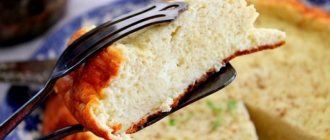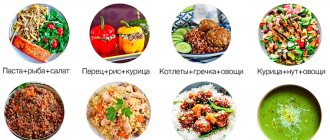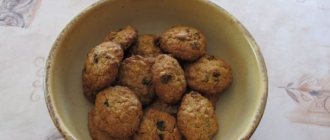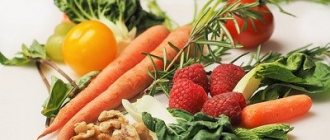Designed by Freepik There are few people who do not like such popular dishes as casserole and cottage cheese pancakes.
It is believed that these desserts are very beneficial for the body, so those who are on a diet often introduce them into their diet.
However, there are so many recipes, and not all of them are suitable for losing weight. In order for baked goods to be tasty and not deposit on the sides and thighs, you need to know its calorie content and prepare it correctly.
Here we figure out how casserole and cheesecakes fit into the concept of proper nutrition, and look for optimal recipes for cottage cheese dishes.
What are the benefits of cottage cheese casserole
Let's start with the fact that cottage cheese itself is already a dietary product. It does not irritate the gastric mucosa and does not increase acidity, so it can be consumed even if digestive processes are disrupted. It contains a huge amount of minerals - magnesium, calcium, phosphorus. Plus almost the entire vitamin range and organic acids. This is a treasure trove for health.
Dietary cottage cheese casserole is everything, the same as cottage cheese. So it makes no difference whether you eat it or the cottage cheese itself. The casserole simply increases the range of flavors, because it contains additional products.
What vitamins does the casserole contain?
Cottage cheese casserole retains all the beneficial properties of fresh cottage cheese. If for some reason a person does not eat meat, then the protein found in cottage cheese will successfully replace it. also easily digestible, so it will help those who are restoring the body after illness . Cottage cheese contains almost the entire group of vitamin B, which is necessary for the nervous system and cellular metabolism, to normalize the digestive system and blood sugar.

The casserole retains all the calcium found in fresh cottage cheese, therefore it is recommended for consumption by those for whom fresh cottage cheese can cause digestive problems. These are small children, old people, nursing mothers. Most products are combined with cottage cheese, which enhances its benefits. The casserole contains phosphorus, magnesium and potassium in a perfectly balanced form, which are necessary for the health of nails, hair, heart and blood vessels.
Cottage cheese casserole is useful for liver diseases; it contains methionine, an amino acid that improves the condition of liver cells.
Calorie content
Many skeptics say that the energy value of the casserole is quite high, because it contains sugar, flour (semolina), eggs and vanillin. Firstly, there is not much flour and sugar in it. Secondly, you should not focus on these components, because they can be replaced or reduced in quantity. Dietary cottage cheese casserole is a dish that you can experiment with.
But we are all still interested in its calorie content, so the classic recipe has an indicator of 180 kilocalories per hundred grams. To reduce it to 120-140 kcal, you need to use dietary cottage cheese or low-fat cottage cheese.
Calorie table
If you look at the calorie table for casseroles, you will see that the number of calories in cottage cheese casserole with semolina differs significantly from cottage cheese casserole with raisins. This will help us prepare casseroles correctly and at the same time not forget about the figure.

| Product | Calorie content (kcal) |
| calorie content of cottage cheese casserole without flour | 187 |
| calorie content of cottage cheese dietary casserole | 99 |
| from low-fat cottage cheese | 100 |
| from cottage cheese 5% | 153 |
| from cottage cheese 9% | 186 |
| calorie content of cottage cheese casserole, as in kindergarten | 231 |
| in a slow cooker | 178 |
| calorie content of cottage cheese casserole in the oven | 195 |
| calorie content of cottage cheese casserole with semolina | 179 |
| with semolina and sugar | 182 |
| with semolina without butter | 185 |
| calorie content of cottage cheese casserole with raisins | 202 |
| calorie content of cottage cheese casserole with semolina and raisins | 200 |
| with flour | 139 |
| with oatmeal | 218 |
| with apples | 136 |
| with banana | 162 |
| with dried apricots | 172 |
| with sour cream | 209 |
| with rice | 210 |
| with pasta | 228 |
Dietary cottage cheese casserole - recipe
- The egg is beaten with three tablespoons of sugar.
- Half a kilogram of cottage cheese is scrolled through a meat grinder.
- All ingredients are now mixed in one container. That is, cottage cheese, eggs with sugar, 2 tablespoons of semolina or flour, salt and vanillin (to taste).
- If you want to make a carrot casserole with cottage cheese or apples, rub these fruits or vegetables through a grater and mix with the resulting curd mass. By the way, carrots and apples can be mixed with each other.
- A baking sheet is greased with butter, and the finished curd and fruit mixture is laid out on it. It is sprinkled with breadcrumbs and sour cream.
- Now the casserole can be put in the oven and baked for half an hour.
Classic recipe
The classic recipe does not contain many ingredients. Mandatory are: semolina, cottage cheese, egg. To make the dish sweet, add sugar.
Composition of ingredients
Cottage cheese casserole (calorie content - 220 kcal) is prepared from the ingredients:
| Compound | Quantity |
| Cottage cheese | 250 g |
| Sugar | 50 g |
| Semolina | 50 g |
| Egg | 1 PC. |
| Vanilla sugar | 4 g |
| Butter | 15 g |
This amount is enough for 1-2 servings.
Step-by-step cooking process
You need to prepare a classic casserole strictly according to the recipe:
- The curd must be crushed with a fork.
- Add sugar, semolina, vanilla sugar, and egg to the curd mass. All ingredients must be mixed well.
- A baking sheet should be taken with high sides. It is allowed to use a glass form.
- The baking sheet must be coated with oil.
- Pour the curd mixture into a baking tray and level it out.
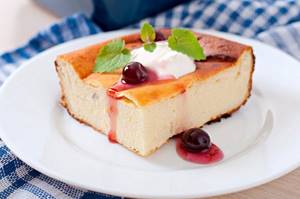
- The product must be placed in the oven for half an hour. The oven temperature should be 170-180 ᵒC.
What can I add?
You can add fresh fruits (banana, berries, apples), dried fruits (raisins, dried apricots, prunes) to the dish. There are recipes with the addition of cheese and vegetables.
How to serve a dish
The product must be served warm or cold. Cut a square or triangle from the finished dish and place it on a plate. The serving is decorated with fruit. You can serve the dish with sour cream, condensed milk, whipped cream, and jam.
Other types of dietary casseroles
As many products as there are on the market, so many casseroles can be prepared. Of course, not all products fit the “dietary” criterion, but you can select a certain amount for weight loss and use them in diets. For example, carrot casserole, the recipe for which is very simple and the calorie content is so low that many women want to use it. Therefore, now we will answer the question, how to cook carrot casserole in the oven?
5-6 medium carrots should be cut into strips and stewed in butter. 20 minutes will be enough. All this is crushed in a blender. Now the crackers are poured with cream, you need to wait until it all turns into a kind of mass. Next, put grated carrots, a cracker mixture, the yolk of one egg mixed with butter, and the whites, beaten separately, into one container. This mass is poured onto a baking sheet, previously greased with butter, and sprinkled with breadcrumbs on top. Some housewives sprinkle it all with vegetable oil. The casserole should be cooked in the oven for half an hour.
Basic nutritional requirements for gastritis
– rapid digestibility, low fat content and soft consistency. Therefore, you should be especially careful when choosing dessert. Many ordinary people advise considering cottage cheese casserole as a homemade one, but can it be consumed if you have gastritis and what features need to be taken into account during preparation?
On kefir
Instead of yogurt, put kefir in the dish. This product makes the casserole more tender and fluffy. It is recommended to use 1% kefir.
Composition of ingredients
To manufacture the product you need:
| Components | Quantity |
| Cottage cheese without fat | 300 g |
| Kefir | 100 ml |
| Egg | 2 pcs. |
| Raisin | according to taste preferences |
| Nuts (any) | on demand |
| Dried fruits (any) | how much is needed |
| Sugar | up to 3 tbsp. l. |
Step-by-step cooking process
The dish should be prepared as follows:
- It is recommended to beat the eggs with a blender.
- Cottage cheese and kefir need to be mixed. Next you need to add the eggs and mix everything carefully.
- Add nuts, dried fruits and other additives to the dough and mix everything.
- The curd mixture must be distributed on a baking sheet that has been previously greased with oil.
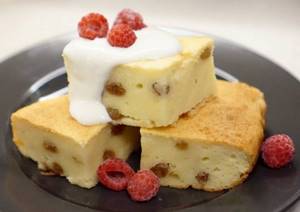
- You need to bake at a temperature of 180 ᵒC for 25-30 minutes.
How to serve a dish
The product must be eaten warm or cold. The casserole is cut into pieces and served with sour cream, cream, berries, and fruits.
Is it possible to eat cottage cheese casserole if you have gastritis?
Gastroenterologists confidently say
that
cottage cheese casserole
is not only tasty, but also
an extremely healthy dessert for the gastrointestinal tract
. The fundamental criterion is the choice of natural and fresh cottage cheese and proper preparation of the dish. When treating gastritis, it is the casserole that can bring some variety to a meager diet. This is due to the fact that it has a number of significant advantages compared to the usual traditional recipes.
According to its characteristics, the casserole
is considered a light
and at the same time very
satisfying dish.
On top of that, it is a delicious and delicious dessert, loved by many patients suffering from gastritis. You can show your imagination and, from various products acceptable for consumption with gastritis, prepare this dessert in various variations.
It is important that this dish effectively relieves hunger, which is why casserole is a fundamental dietary dessert. In order to get enough of it, it is enough to eat only 50-70 grams, so overeating this dish is completely excluded.
Cheese casserole
This product does not have a sweet taste. It is served for afternoon tea, breakfast or dinner as a separate dish. When baking the product, a cheese crust is obtained, which makes it tender and tasty.
Composition of ingredients
The product includes the following components:
| Compound | Quantity |
| Cottage cheese without fat | 500 g |
| Eggs | 3 pcs. |
| Hard cheese | 100 g |
| Dill, parsley and other herbs | 200 g |
| Salt | on demand |
| Pepper | according to taste preferences |
Step-by-step cooking process
The dish is prepared like this:
- The curd should be ground in a blender.
- The cheese should be crushed using a fine vegetable grater.
- Parsley and dill need to be chopped with a knife.
- The curd mass, cheese, and herbs need to be mixed in a deep plate.
- Break the eggs into a separate bowl, beat them, and add to the curd mixture.
- It is recommended to place the dough in a prepared and greased baking sheet.
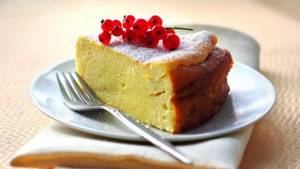
- Bake at 180°C for 40 minutes.
What can I add?
You can add zucchini, carrots and other vegetables to the dish. You can sprinkle cheese on the surface of the casserole.
How to serve
The dish must be placed on a plate, cutting off a rectangular or square piece. The serving is decorated with parsley, dill, and grated cheese. The dish is served with mayonnaise sauces or sour cream.
Benefit or harm?
Cottage cheese itself is a storehouse of valuable fermented milk bacteria, which retain their beneficial properties even after heat treatment. That is why all gastroenterologists recommend casserole for inclusion in the diet for gastritis.
After baking, the dish contains sufficient quantities of iron, calcium, fluorine, phosphorus, as well as B-group vitamins, E, A, PP. It is worth highlighting the easy absorption of protein by the digestive tract.
The benefits of cottage cheese casserole for gastritis with high acidity are known.
. This is due to the fact that, together with fats, protein neutralizes hydrochloric acid, which serves as an irritant to the gastric mucosa.
For gastritis, casserole is
almost
an ideal dish
, and there are so many ways to prepare it that you can eat it not only for breakfast and afternoon snack/snack, but also as lunch and a light dinner. Various recipe variations allow you to prepare not only sweet, but also unleavened dessert dishes, while reliably protecting all organs of the digestive system.
For patients with high acidity
Patients with high acidity levels
and those in remission should use
cottage cheese with a low fat content
. It is also recommended to first pass it through a sieve or rub it with a blender. You can cook the casserole either in the oven or in a double boiler/multi-cooker. To improve the taste, experts allow the addition of baked apples or boiled carrots to the cottage cheese.
For patients with low acidity
A reduced level of acidity implies the consumption of foods that stimulate additional release of hydrochloric acid. Therefore, cottage cheese casserole is an excellent solution.
this problem. As a change, you can add a few spoons of low-fat sour cream or honey, as well as fruit puree from baked apples.
Composition of the product
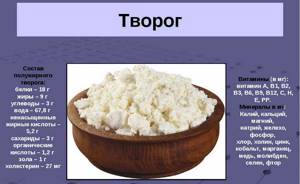
Calorie content 160 kcal.
The nutritional value:
- proteins – 18 g;
- fats – 5.4 g;
- carbohydrates – 19.6.
Chemical composition:
- vitamin A;
- vitamin B1, B2, B4, B5, B6, B9, B12, H, PP;
- retinol;
- vitamin E;
- vitamin C;
- vitamin D;
- calcium;
- magnesium;
- silicon;
- potassium;
- sulfur;
- sodium;
- phosphorus;
- chlorine;
- aluminum;
- boron;
- iron;
- vanadium;
- cobalt;
- iodine;
- copper;
- nickel;
- molybdenum;
- manganese;
- selenium;
- tin;
- titanium;
- fluorine;
- chromium;
- zinc;
- starch;
- Sahara;
- cholesterol;
- sterols.
Proper preparation
Low-fat cottage cheese or homemade fermented milk product are most suitable for preparation. Before kneading the dough, rub the cottage cheese through a fine sieve. It is recommended to knead the dough very thoroughly to prevent the formation of lumps, and also beat it additionally with a blender.
The approximate baking time is individual, since the softening of the fruits or vegetables included in the composition, as well as the baking of the dough, is influenced by the degree of heating and the characteristics of ovens and steamers.
Serve
The casserole must
only be cooled
, since hot dishes are prohibited for gastritis. To improve the digestion process, it is recommended to add one or two tablespoons of low-fat yogurt or sour cream to the prepared dish.
With banana
Banana is added to this recipe. In addition to banana, yogurt is added to the dish. The product has a very pleasant taste due to the presence of pear. This fruit makes the dessert more tender.
Composition of ingredients
The dish has the following components:
| Compound | Quantity |
| Cottage cheese without fat | 400 g |
| Banana | 1 PC. |
| Pear | |
| Egg | |
| Natural yogurt | 250 ml |
| Sugar | on request (may not be used) |
Step-by-step cooking process
The dish is prepared like this:
- Cottage cheese should be crushed with a fork or blender to remove large lumps.
- The banana must be peeled, crushed to a pulpy state, and added to the curd mixture.
- Next, add egg and yogurt to the dough.
- It is recommended to wash, peel, and chop the pear into cubes or straws. The fruit should be placed in the curd mixture.
- Next you need to prepare a baking sheet and coat it with oil. Place the curd mixture into the mold and smooth it out.
- The oven must be turned on and set to 180°C.
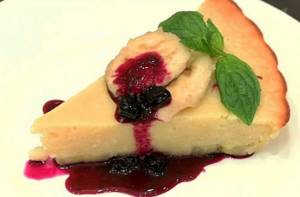
- When the oven is preheated, place the dish in the oven for 30 minutes.
What can I add?
It is allowed to add dried apricots, apples and other fruits to the product. You can add cream and milk.
How to serve a dish
The casserole is served chilled on a plate. The dish is decorated with slices of banana or pear, syrup, and mint leaves. You can serve sour cream with the product.
Recipes for making cottage cheese casseroles in the oven
Simple cottage cheese casserole
To prepare the curd dessert you will need:
- 450 g low-fat or homemade cottage cheese;
- 4 tbsp. granulated sugar;
- 3 tbsp. semolina;
- Vanillin on the tip of a knife;
- 3 eggs;
- 50 g sour cream;
- Breadcrumbs.
Preparation:
- Mix the pureed cottage cheese with granulated sugar, eggs, semolina and vanilla.
- Grease a baking dish with vegetable oil and lightly sprinkle breadcrumbs on the bottom.
- Carefully pour the curd mixture into the mold and level the surface, then pour in sour cream.
- Bake in an oven preheated to 180 degrees for about forty minutes.
- After cooling completely, serve, lightly brushing the surface with sour cream.
Fresh cottage cheese casseroles
There are recipes for unsweetened casseroles, where about 250 g of pre-boiled and chopped vegetables and a small amount of salt are added to the dough, mixed using traditional technology. If the kneaded dough becomes too soft, you need to add 1.5 tbsp. breadcrumbs.
As an addition to the curd mass, the following vegetables and herbs are allowed to be consumed:
- ¾ beets;
- ¾ spinach;
- ¾ carrots;
- ¾ zucchini;
- ¾ green peas;
- ¾ pumpkin;
- ¾ parsley, green onions and dill.
Cottage cheese casserole will become a full-fledged, hearty second course if, instead of vegetables, you add lean meat into the dough, grated through a meat grinder. An excellent option for lunch is cottage cheese casserole with the addition of meat, grated cheese and herbs.
It is noteworthy that instead of semolina, many nutrition experts advise using rice porridge. Rice-based dough helps envelop and protect the gastric walls, therefore, cottage cheese casserole with rice is acceptable for use with gastritis.
Curd mass is a delicacy that has a very nice smell and is made from ordinary cottage cheese. This product was invented back in the thirties of the last century in the USSR. Due to the fact that cottage cheese Easter was prohibited at that time, they decided to replace it with cheesecakes. But the curd mass itself arose somewhat later, approximately in the 80s of the same century.
What nutritionists say
Cottage cheese casserole is an easily digestible dish for the digestive system, so it can be offered to children, the elderly and those on therapeutic diets. However, it is necessary to pay attention to the component casseroles.

What makes a casserole dietary is the absence of flour or semolina in it, then cottage cheese casserole becomes a gift for those who are losing weight, as it diversifies the diet and gives taste pleasure, while remaining a healthy dish. Many vitamins, calcium and protein strengthen bones and the entire body.
And if you add other healthy foods to the casserole, you can get an energy set of vitamins and microelements. For example, a casserole goes well with seasonal berries - raspberries, blueberries, strawberries, wild strawberries; with fruits - apples, bananas, any herbs and seasonings.
Casseroles are often used in the famous Dukan diet, in the Kremlin diet, in the protein diet . Low-fat, low-calorie cottage cheese (0%) is, oddly enough, not recommended for dieting, as well as for a healthy diet in general. For quality life, the body needs a little fat, so for weight loss it is better to take cottage cheese from 1.8% to 5% fat.
It is better to eat cottage cheese casserole in the first half of the day, as it takes longer to digest fermented milk products.
In dietary nutrition, unsweetened casserole can be eaten with tomatoes, cucumbers, sweet peppers, and herbs. Berries can add sweetness to the casserole.
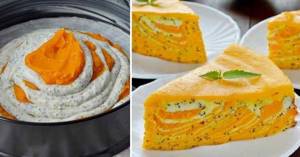
You can make a casserole with pumpkin, zucchini or oatmeal. The main thing with a low-calorie diet is to remember that when preparing a casserole, sugar, flour and semolina are excluded, especially from soft varieties of wheat, otherwise the result will not be what you want.
What is this product made from?
Essentially, this delicacy is a paste that can maintain its shape without packaging. Manufacturers of these products are strictly prohibited from using any kind of stabilizers that affect the consistency of the sweet.
It includes:
- butter;
- condensed milk;
- regular table salt;
- cottage cheese;
- additional ingredients? dried apricots, raisins, candied fruits, vanillin and even greens.
Is this product useful?
The benefits of consuming cottage cheese products are absolute. Using special technology, this tea product cannot be heat treated, which means that it retains virtually all the useful properties of ordinary cottage cheese, but at the same time is much more appetizing.
This delicacy contains mineral elements such as calcium, molybdenum, phosphorus and even magnesium. In addition, this dish is rich in milk protein, which is very easily absorbed by the body.
Perhaps the only drawback of this delicacy is its high calorie content. But for old people this product will certainly not cause damage, quite the opposite! It is very rich in healthy fats, proteins and acids that can normalize the functioning of the gastrointestinal tract.
Since this sweetness has clear antiseptic properties, its consumption will help in the fight against viral and infectious diseases. This dish also contains a large amount of vitamin B, therefore, periodic consumption of such a dish can improve sensitive human health.
How to determine the quality of a product by appearance?
A quality product must first of all be dry. Because it must contain cottage cheese with a fat content of at least 18%, the grains in the mass do not have to be clearly defined.
When choosing a treat, pay attention to the brand of production. According to GOST, it is prohibited to add preservatives to a dish, but some careless manufacturers may neglect this rule. Therefore, be diligent about purchasing products only from those manufacturers you trust.
How to prepare the mass yourself?
This type of delicacy can be bought in a store, but if desired, the curd mass can also be prepared at home.
To prepare the delicacy you will need (for half a kilogram of cottage cheese):
- Three egg yolks;
- 65-80 ml milk;
- 3 tablespoons sugar;
- Additional ingredients (apples, dried fruits).
You need to add milk and yolks to the cottage cheese, after which everything is thoroughly beaten with a mixer until it becomes a homogeneous mass. If desired, you can add dried fruits (dried apricots, prunes, raisins) to the finished product.
To ensure that the calorie content of homemade curd mass is not too high, you can replace sugar with flower honey. It is advisable not to add more than 3 additional ingredients to the dish; one of them will definitely overwhelm the rest.
A classic dish may consist of:
- apples and raisins;
- chopped nuts and chocolate;
- wild berries and pure dark chocolate.
How to make a savory dish?
The unsweetened product harmonizes wonderfully with bread. As usual, it is served as a snack, while the sugary mass is used as a separate dish. Cheese pancakes are often made from curd mass.
If you do not have thick cottage cheese, you can use cottage cheese with a fat content below 5-6%. To make the consistency soft and airy, rub the cottage cheese through an ordinary sieve. You can also use a blender or mixer.
For savory snacks, you can use parsley and garlic, lettuce with ground paprika, tomato puree with black allspice as additional ingredients.
Cottage cheese casserole
The recipe for this casserole made from store-bought curd mass does not require the use of flour. But, despite this, the dish turns out to be very appetizing and airy.
To prepare it you will need:
- 500 g of ordinary cottage cheese;
- 6 tbsp. spoons of semolina;
- 2 tbsp. spoons of sugar (powdered sugar is allowed);
- 3 chicken eggs (yolks should be separated from whites);
- A teaspoon of vanilla essence;
- 1 packet of baking powder;
- Raisins and cranberries.
First, preheat the oven to 190 degrees. All listed ingredients must be mixed, but without proteins! They must be beaten in a separate bowl with salt added. Once the egg whites are beaten, they are mixed with the remaining ingredients.
Then the finished composition must be poured onto a baking sheet. It is advisable to grease the baking sheet with oil in advance so that the casserole does not burn and can be easily separated. Bake the dish for half an hour until the top is browned and covered with a golden crust. The finished casserole can be served with honey or sour cream.
A savory casserole is prepared according to the same principle. But as additional ingredients you can use garlic and herbs with some addition of homemade cheese.
How to make Easter?
For classic Easter from store-bought curd mass you will need:
- 2 kg thick cottage cheese;
- 250-300 g sour cream;
- 150 g butter;
- 1 cup powdered sugar;
- Salt to taste.
First you need to grind each cottage cheese through a sieve. Then the butter is combined with powdered sugar, after which the finished mixture is mixed with sour cream. When you have a homogeneous creamy mixture, mix it with cottage cheese.
Then add salt to taste and mix everything thoroughly. At the final stage, the finished mass is placed in a beaker and left in a cool place for half a day. Later this Easter will be ready.
How to choose a product?
Even theoretically, not everyone knows about the benefits and benefits of cottage cheese with raisins or dried apricots. Unfortunately, this ignorance sometimes leads to rather difficult results. Tea consumption of a low-quality product can cause poisoning of the body.
Therefore, before purchasing a treat, you need to evaluate it in advance by smell. If a dish has an unpleasant smell of fermentation, it should never be consumed.
Also, you should not prepare it at home using stale milk; tea it contains bacteria that is unsafe for the body.
If the product is not sold in sealed packaging, keep in mind that such curd mass will only be suitable for the first 24 hours.
High-quality curd products can be called suitable and appetizing fast food without embellishment; tea can also be consumed as an independent dish. And in the hands of a skilled housewife, this product can easily turn into a luxurious and low-calorie delicacy.
Almost all people know about the benefits of dairy products, but not everyone can appreciate their taste. Cottage cheese is considered a dietary product and with its help you can lose weight, normalize digestion and enrich the body with useful microelements. But what to do if you can’t force yourself to eat cottage cheese in the morning? Can it be replaced with a casserole?
What are the benefits of cottage cheese?
Cottage cheese is a source of calcium and protein. Its flakes are completely absorbed by the body and do not burden the digestive tract. Cottage cheese contains methionine, which can lower cholesterol levels. Cottage cheese contains a lot of folic acid, as well as vitamins A, E, P and B. Cottage cheese is not only a source of calcium, but also iron, magnesium, zinc, fluorine and sodium. It has a positive effect on the body and is absorbed very quickly.
Eating cottage cheese is necessary for children and the elderly. Many therapeutic diets include cottage cheese. For ulcers, gastritis, diseases of the gallbladder and intestines, it is recommended to eat cottage cheese daily. In this case, it is advisable to choose cottage cheese with minimal fat content. Cottage cheese contains casein, which is an excellent substitute for animal protein. People who consume cottage cheese are less likely to suffer from atherosclerosis and do not have problems with joints.
Cottage cheese is not recommended for people with kidney problems. It is worth understanding that this product is a source of protein, and this is a huge burden on the kidneys. People suffering from atherosclerosis should eat low-fat cottage cheese. Otherwise, the disease may progress.
Is cottage cheese casserole healthy?
Cottage cheese casserole is an excellent dish for those people who do not like to eat cottage cheese in its pure form. When cooked, cottage cheese does not lose its beneficial properties and is also easily absorbed by organisms. The casserole preserves almost all the beneficial substances and vitamins contained in cottage cheese.
There are many recipes for cottage cheese casserole and the calorie content of the dish depends on the ingredients used. The classic cottage cheese casserole consists of cottage cheese, sour cream, eggs and sugar. Some people add flour or semolina to the casserole. These products have a high gluten content and are best avoided.
The average calorie content of a cottage cheese casserole is 150 kcal, but in some cases it can reach up to 250 kcal. The calorie content of the product is affected by the fat content of the cottage cheese, the amount of sugar and other additives. The healthiest casserole is made from homemade cottage cheese, eggs and sour cream. It is quite difficult to find such products in the city. The main thing is that all ingredients have a good shelf life.
When asked what is healthier, cottage cheese or casserole, preference should be given to a natural product. Natural cottage cheese is much healthier than casserole. However, if you add a little variety to your menu in the form of a casserole, it will not harm your health, but even vice versa. In this case, you need to pay attention to the quality and expiration dates of all ingredients.
Every dieting girl dreams of sweets like chocolate cakes and ice cream. The fruits allowed by the diet usually get boring before the extra pounds are gone. A great alternative to ice cream and cakes is cottage cheese casserole. Yes, yes, the same casserole that is served to children in kindergarten. This trick allows you to feed preschoolers who refuse to eat cottage cheese in its usual form. Homemade fluffy casserole with berry or fruit filling has nothing in common with the slightly sweet curd mass that set the teeth on edge in childhood.
Cottage cheese dishes in a healthy diet: pros and cons

Cottage cheese is rich in organic acids, minerals, and vitamins.
Dishes made from it have a good effect on many organs and systems, so even children, the elderly, and sick people are advised to eat it. They have a good effect on bone and muscle tissue.
In addition, cottage cheese contains a minimal amount of calories (except for products with high fat content), is easily digestible, and saturates the body with useful substances. Fresh is the most useful, although even after heat treatment it retains its beneficial properties.
This is interesting! Nutritionists advise eating about 200 g of cottage cheese per day.
However, if consumed uncontrolled, cottage cheese baked goods can be harmful to health and cause an increase in fatty tissue. It is better to avoid it in case of digestive disorders or exacerbations of diseases of the digestive organs.
Calorie content of the product
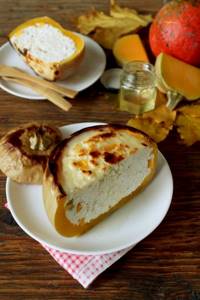
People who want to lose weight are especially interested in the issue of calorie content of cottage cheese dishes. To find out the nutritional value of a casserole, you need to add up the calorie content of each ingredient.
First of all, the calorie content of baked goods depends on the fat content of the cottage cheese: 100 g of low-fat cottage cheese – 90 kcal, semi-fat (9%) – 160 kcal, fat (18%) – 230 kcal.
The following table will help you make accurate calculations and select ingredients.
Classic cheesecakes consist of full-fat cottage cheese, eggs, sugar, flour and vanilla. The approximate calorie content of 100 g of such baked goods is 216 kcal. And if you consider that cheesecakes are usually eaten with sour cream or jam, their energy value increases even more.
By the way, find out from our article whether you can even eat sour cream while losing weight.
The approximate calorie content of 100 g of cheesecakes with cherries is 264 kcal, raisins – 259 kcal, apples – 196 kcal. For an accurate calculation, it is recommended to use the table below.
Proteins, fats and carbohydrates
You may also be interested in: Features of low-fat cottage cheese: BZHU, types, benefits
The proportions of nutrients in 100 g of casserole also depend on the composition:
| Components | Protein, g | Fats, g | Carbohydrates, g |
| With semolina | 14,8 | 8 | 22 |
| With raisins | 13 | 10 | 16 |
| With apples | 7,5 | 4,4 | 16,8 |
| With dried apricots | 12 | 4,5 | 18 |
| With cottage cheese (1.8%) | 12 | 3,6 | 9,5 |
Amount of BJU in 100 g of cheesecakes with different ingredients:
| Components | Protein, g | Fats, g | Carbohydrates, g |
| With semolina | 14,9 | 7 | 13,2 |
| With raisins | 11,8 | 13,5 | 21,7 |
| With apples | 10,8 | 9,2 | 16,9 |
| With cherries | 11,3 | 10,6 | 30,6 |
| With cottage cheese (0%) | 14,6 | 3,2 | 10,2 |
But the exact nutrient content per 100 g of product depends on the exact composition.
You may also be interested in: Is it possible to eat dry foods on a weight loss diet?
Benefits and harms
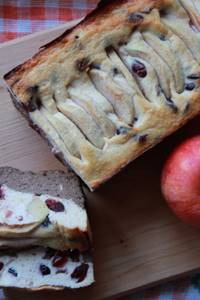
When prepared correctly, casseroles and cheesecakes are considered very healthy:
- They are rich in phosphorus and calcium, which are necessary for bone tissue.
- Fiber normalizes the functionality of the digestive organs.
- Cottage cheese is quickly absorbed by the body and rarely provokes allergies.
- Baking contains B vitamins, which have a beneficial effect on the cardiovascular and nervous system.
- Normalizes hemoglobin levels.
- With regular use, metabolic processes accelerate and the fat layer burns faster.
- Light desserts help you lose weight or build muscle mass.
However, cottage cheese contains milk protein, which can cause allergies. Also, baked goods often contain wheat flour or semolina, which contain gluten. This substance is contraindicated for some people due to individual intolerance.
Desserts are not recommended for consumption in cases of exacerbation of diseases of the digestive organs, kidney diseases, or on a diet that excludes protein.
When is the best time to eat: breakfast, lunch or dinner

An adult can consume cottage cheese and dishes made from it 1-2 times a day.
Casseroles and cheesecakes, if prepared correctly, are excellent as a tasty and healthy breakfast. Dessert can be consumed closer to 11 o'clock. The pastries are also suitable for afternoon tea (around 16:00). Desserts can be enjoyed at lunch.
Casserole and cheesecakes made from low-fat cottage cheese can be eaten even for dinner, but no later than 19:00. Only use light dietary products for cooking. It is better to replace sour cream or jam with which baked goods are served with berries.
According to nutritionists, the best time to eat cottage cheese desserts is the first half of the day.
Be sure to check out:
Options for a healthy dinner What is a healthy breakfast Is it worth eating lunch with proper nutrition Rules and recipes for the menu with proper nutrition
Curd casserole: benefits and harm
Cottage cheese should definitely be included in the menu of those losing weight and vegetarians. Firstly, because of the phenomenal calcium content, useful for strengthening bones and teeth, maintaining the beauty of skin, hair and nails. It is the only dairy product that contains the required amount of B vitamins, usually obtained by humans from meat. Cottage cheese contains plant fiber that keeps you feeling full for a long time. Cottage cheese dishes are easily absorbed by the body, rarely causing allergic reactions. But the risk of allergies still exists. If you have an individual intolerance to milk protein, buy gluten-free products in specialized stores so as not to harm your own health. Regardless of what you choose, it should turn out fluffy, dense and ruddy. To create a culinary masterpiece you need to follow some rules:
- The basis of all casseroles is cottage cheese. The wrong choice of cottage cheese will ruin all your efforts. Its fat content should be as high as possible. By the way, the same postulate applies when choosing cottage cheese for baking pies: a low-fat product will give a rancid taste when mixing the components; If there is excess liquid in the cottage cheese, you need to get rid of it. Let the cottage cheese drain a little by placing it in a colander or squeezing it out with a gauze napkin; Most cottage cheese casserole recipes indicate that the cottage cheese should be mashed with a fork until smooth. This method will not add fluffiness to the casserole. Use a mixer - save both time and effort. If you don’t have one, you can rub the cottage cheese through a sieve.
With dried apricots and raisins
In this recipe, dried apricot and grapes are added to the curd mass. Sugar is not added to the dish at all. Add a little salt and vanillin to improve the taste of the dish.
Composition of ingredients
Cottage cheese casserole has the following ingredients:
| Compound | Quantity |
| Cottage cheese without fat | 400 g |
| Dried apricot | 1 glass |
| Dried grapes | ½ cup |
| Semolina | 60 g |
| Egg | 1 PC. |
| Yogurt with a little fat, low-fat sour cream | 50 g |
| Oil | for coating a baking tray |
| Salt | how much is required |
| Vanillin | according to taste preferences |
Step-by-step cooking process
Cottage cheese casserole (calorie content - 150 kcal) is prepared as follows:
- The curd needs to be ground. This can be done using a fork or strainer.
- Dried fruits need to be soaked in separate bowls and filled with freshly boiled water. Stand for 15 minutes, then drain the liquid and dry. Raisins can be added whole, and dried apricots should be chopped with a knife.
- Dried fruits need to be mixed with cottage cheese, add semolina, yogurt, egg, salt, vanillin. All ingredients must be mixed.
- Next you need to prepare a baking sheet and coat it with oil. Place the dough into the mold.
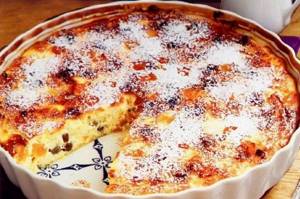
- The dish should be baked at 180°C for 25 minutes.
What can I add?
You can add a small amount of sugar, fruits and dried fruits. To make the product tastier, you can pour a little syrup into the dough.
How to serve a dish
The casserole should be served on a plate, cutting out a piece from the finished dish. The product can be decorated with berries and fruits. It is allowed to serve jam, syrup, sour cream, without fat.
Recipe for cottage cheese casserole with raisins and dried fruits
300 gr. Grind cottage cheese with 3 small chicken eggs and 4 tbsp. granulated sugar by hand. Place the mixture in a mixer and beat it with 200 gr. sour cream and a pinch of salt. Gradually add 3 tbsp. semolina, 2 tbsp. raisins and about 100 gr. dried apricots or prunes. As with any cottage cheese casserole recipe, the mixture will have to be cooked in the oven. Grease a small baking dish with butter and place the cottage cheese there. Leave in the oven for 7-8 minutes at 200°C.
How to prepare a festive cottage cheese casserole?
There are recipes for cottage cheese casserole that are quite suitable for a gala dinner. For example, casserole with pears, cherries and champagne. Peel 1 large pear and cut into cubes. 200 gr. beat cottage cheese with a blender with 3 tbsp. sugar, 2 eggs and 150 gr. sour cream. Add ½ tbsp to the mixture. champagne and 100 gr. fresh or canned pitted cherries. Using a spoon, mix the mixture with the pears. Place in a greased pan and bake in the oven for at least 10 minutes. To get a golden brown crust, also grease the top of the casserole with a piece of butter.
With pumpkin
Pumpkin is very useful for weight loss, as it does not contain a large amount of calories and is rich in vitamins and micronutrients. Ripe, sweet pumpkin is best suited for baking.
The dish has a specific pumpkin taste. To add a sweetish taste, use raisins and a little sugar.
Composition of ingredients
Cottage cheese casserole with pumpkin has a low calorie content (up to 155 kcal) and is prepared from the following ingredients:
| Components | Quantity |
| Fresh pumpkin | 500 g |
| Cottage cheese without fat | 300 g |
| Sugar | 50-100 g (according to taste preferences) |
| Egg | 2 pcs. |
| Dried grapes | 50 g (may not be used) |
| Semolina | 50-75 g |
Step-by-step cooking process
You can prepare the dish as follows:
- The pumpkin needs to be peeled, chopped into pieces, and placed on a baking sheet greased with oil. The vegetable should be baked at 180°C in the oven for 35 minutes.
- The pumpkin needs to be cooled and pureed. You need to put ½ part of all other products into the mass.
- Grind the cottage cheese through a strainer and add all the remaining additional ingredients. The curd mass must be mixed.
- The casserole needs to be layered. To do this, first smooth out a layer of pumpkin puree, then a layer of curd mixture, onto a baking sheet coated with oil. These layers must be alternated.
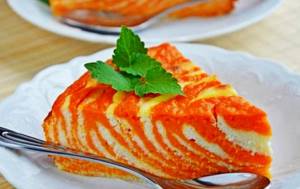
- The baking sheet should be placed in the oven for 50 minutes. The oven temperature should be 180 ᵒC.
What can I add?
You can add carrots to the pumpkin. These vegetables go well together. You can add nuts to the dough. They give the dish satiety and a pleasant taste.
How to serve a dish
It is advisable to serve the product warm or cold. You can decorate the casserole with parsley or dill. Be sure to add sour cream or cream to the serving.
Without flour and semolina
Flour increases the calorie content of the casserole, so the weight loss program includes recipes without this product. Without flour, the dish turns out more tender, due to the fact that the egg whites are whipped into foam.
Composition of ingredients
The following products are used to prepare the dish:
| Compound | Quantity |
| Cottage cheese without fat | 250 g |
| Plain yogurt or milk | 100 ml |
| Egg | 2 pcs. |
| Sugar | 50 g |
| Vanillin | on demand |
| Turmeric | according to taste preferences |
| Cinnamon | how much is needed |
If the patient has diabetes, sugar should not be used. Sweeteners are added to the dish. If this disease does not exist, it is better to use regular sugar, maple syrup or honey.
Step-by-step cooking process
The dish should be prepared as follows:
- To make the product tasty and tender, the egg should be divided into yolks and whites. Beat the whites with sugar until foam and stable sharp peaks appear.
- Mix the milk with the yolks, add a little sugar and beat. To this mixture you need to add grated cottage cheese, cinnamon, turmeric, and vanillin.
- The curd mass should be carefully mixed with the proteins in 3 stages.
- Next, you should wash the baking sheet, coat it with oil, turn on the oven, set the temperature to 170 ᵒC.
- The curd mass should be placed on a baking sheet, leveled, and brushed with an egg beaten with a fork.
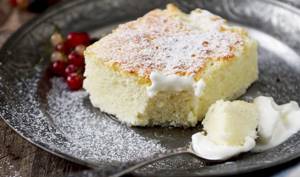
- Bake for 40 minutes.
How to serve a dish
The product should be served cold or warm. Pieces of casserole are cut out with a knife. In portions add sour cream, syrup, berries, cream (not fatty).
Calorie content of cottage cheese casserole with semolina per 100 grams
The calorie content of cottage cheese casserole with semolina per 100 grams is 215 kcal. 100 g of dish contains 12.9 g of protein, 9.4 g of fat, 20 g of carbohydrates.
The following ingredients are required for preparation:
- 0.4 kg of semi-fat cottage cheese;
- 3 eggs;
- 3 tablespoons of semolina;
- half a glass of sugar;
- salt to taste;
- 1 tablespoon butter;
- 2 g soda.
- eggs are mixed with sugar and cottage cheese;
- add 1 tablespoon of melted butter to the resulting mixture;
- the mixture is salted, mixed with soda slaked with vinegar;
- semolina is added to the egg-curd mass;
- The dough is laid out in a form sprinkled with semolina and baked for 50 - 60 minutes.
Sugarless
This recipe uses sweeteners instead of sugar. Stevia is most often used. The dish is very tender and airy, as the egg whites are whipped until foamy.
Composition of ingredients
The product contains the following components:
| Compound | Quantity |
| Cottage cheese without fat | 500 g |
| Egg | 4 things. |
| Milk (yogurt without additives) | 120 ml |
| Ghee oil | 1 tbsp. l. |
Step-by-step cooking process
To prepare the casserole, follow the recipe:
- The whites and yolks of eggs must be separated. The protein part needs to be whipped with a blender. You should get foam with sharp peaks.
- Milk should be mixed with the yolk part of the eggs, beat, and then add cottage cheese to the mixture.
- The protein must be carefully combined with the curd mixture in 2-3 stages.
- Next, you need to wash the baking sheet, coat it with oil, turn on the oven, set the temperature to 170 ᵒC.
- The curd dough should be placed in a mold and distributed.

- It is recommended to bake for 30 minutes. Readiness must be checked with a toothpick or match. If the dough does not stick to the wood, then the dish is ready.
How to serve a dish
The casserole should be eaten warm or cold. Cut a piece out of a baking sheet, place it on a plate, garnish with berries, nuts, and syrup.
